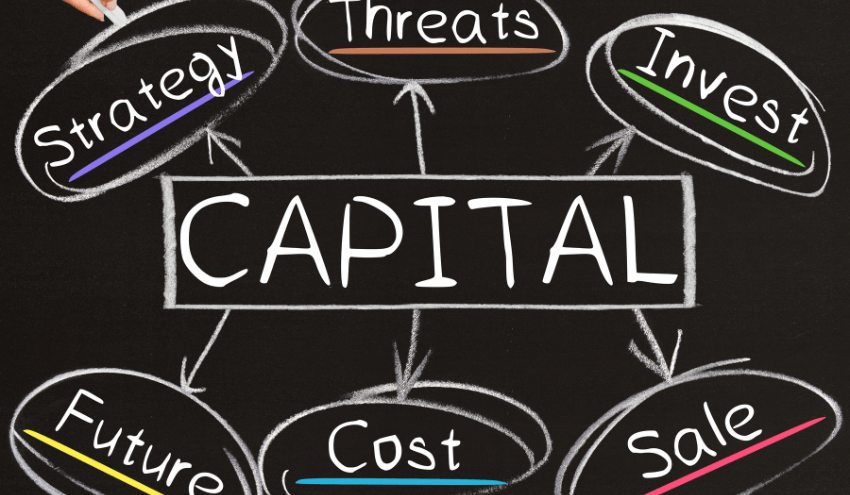“Cash is king.” Many of us are familiar with this saying and it makes sense. You want to generate more money than your company is spending, but you also need to invest in equipment, staffing, and other resources to continue operating and growing your business. Forecasting working capital may have been easier in the early days of your company than it is now. As you scale your business, you may find that tracking invoice payments, optimizing lead times, and managing liquidity becomes ever more complex.
Whether you work with an accounting team or you handle your own books, it is crucial to understand the components of good working capital management to ensure your employees get paid and growth opportunities are seized.
Keep reading to learn more about what goes into effectively managing your working capital, important formulas to know, and where working capital management may fall short.
What is Working Capital Management?
Working capital management refers to the strategic management of a company’s short-term assets and liabilities to maintain cash flows. This management is important as it ensures day-to-day operations can continue and plays a larger role in the overall financial health of a business.
What is Working Capital?
Working capital is the lifeblood that keeps a business alive and thriving. Working capital is the money that covers the daily costs of running a business such as payroll and utilities. It represents the difference between a company’s current assets and current liabilities. In simpler terms, it’s the capital that remains available after short-term obligations have been met.
The formula for working capital:
Current Assets – Current Liabilities = Working Capital
Read more about Working Capital: Formula, Examples, and Nuances Explained.
5 Elements of Working Capital Management
Successful working capital management revolves around a finely tuned balance of several components:
Liquidity
Working capital management revolves around the liquidity of a firm. In other words, liquidity is the ability of a business to maintain a healthy level of cash for both expected and unforeseen expenses that may arise. A company wants to be liquid enough so it does not need to sell long-term assets to settle debts, but not so liquid that it misses out on investment opportunities.
Payables
Accounts payable are the debts that a business owes to its suppliers and vendors. Optimal management of payables includes negotiating favorable terms, extending payment windows without harming relationships, and streamlining the payment process.
Receivables
Accounts receivable represent the money owed to a business by its clients or customers. Efficient management of receivables involves setting clear payment terms, monitoring outstanding balances, and implementing strategies to reduce late payments.
Inventory
Inventory management is a delicate dance between having enough products to meet demand and avoiding excess stock that ties up resources. Striking this balance ensures that working capital is not unnecessarily locked into stagnant or work-in-progress (WIP) goods.
Short-Term Debts
Short-term debts, such as loans or lines of credit, are integral to many businesses’ financial structures. Managing these debts responsibly, by making timely payments and leveraging them for growth opportunities, contributes to working capital management.
Importance of Working Capital Management
Strategic Operating Cycle
An operating cycle refers to the time it takes a company to purchase inventory or raw materials, produce and sell goods and/or services, and receive payment. Having a solid understanding of your operating cycle can help in forecasting the company’s ability to meet obligations and maintain the financial health of your business.
The shorter an operating cycle is, the more likely it is that your company will be able to meet obligations and continue day-to-day operations without additional financing. A few ways to help expedite your operating cycle include:
- Incentivizing early payments from customers
- Purchasing inventory from reliable vendors
- Settling accounts payable on time
- Selling goods as soon as they are stocked
Timely Debt Payments
Proper working capital management empowers a company to meet its financial obligations on time. This not only prevents late payment penalties but also preserves the company’s credibility and relationships with suppliers and lenders. Creating policies to collect accounts receivables from customers on time and working with suppliers to negotiate longer payment terms are ways to manage your company’s debts and credit effectively.
Laying the Groundwork for Growth
When working capital is managed well, a business can better position itself for growth. Having a cushion of available funds enables a company to capitalize on expansion opportunities, invest in research and development, and explore new markets without overextending its financial resources.
Capital Efficiency
Working capital management goes beyond efforts to ensure cash is available as needed. Effective working capital management leads to higher capital efficiency. By reducing the time and resources locked in unproductive assets like excess inventory or delayed receivables, companies can unlock capital for strategic initiatives that drive growth.
Ratios You Should Know
When it comes to managing working capital, there are a few key ratios you need to understand. These ratios will provide valuable insights into the performance of a business’s working capital management:
Current Ratio
The current ratio, also known as the working capital ratio, is a quick assessment of a company’s ability to cover its short-term liabilities with its short-term assets. It’s calculated by dividing current assets by current liabilities.
Current Assets / Current Liabilities = Current Ratio
If a firm’s current ratio is less than 1.0, this indicates that it may be unable to pay its current debts as it owes more money than is forecasted to be on hand within the next 12 months. Though it may seem counterintuitive, it’s important to note that a high current ratio isn’t always best. Current ratios over 2.0 may signal that the company is not taking full advantage of its assets and responsibly investing in future growth opportunities. Businesses often strive for current ratios between 1.2 and 2.0 as it indicates there are more current assets available than current liabilities but that the firm is still leveraging growth opportunities.
Collection Ratio
The collection ratio gauges how efficiently a company is collecting payments from customers. This figure is achieved by multiplying the number of days in a period by the average amount of accounts receivable, then dividing by the net credit sales of the accounting period.
(Avg Accounts Receivable / Net Sales) x Days in Period = Collection Ratio
A higher collection ratio means it takes a company longer to receive payment from its customers. This signals that the company may run into cash flow problems if the receivables are not collected in a timely manner. A lower collection ratio indicates a shorter collection period, meaning the company likely has greater cash flow available.
Note: The collection ratio does not consider cash transactions, so if a company typically requires cash transactions but makes certain deals on credit, the collection ratio will not accurately reflect the average time it takes for the company to be paid.
Inventory Turnover Ratio
The inventory turnover ratio assesses how many times a company’s inventory is sold and replaced within a given period. This is calculated by dividing the cost of goods sold by average inventory.
Cost of Goods Sold / Avg Inventory = Inventory Turnover Ratio
A high inventory turnover ratio may suggest the company requires more inventory on hand to ensure consistent order fulfillment. A low inventory turnover rate could indicate an opportunity to slow production in order to save on inventory storage costs and other associated liabilities. Inventory management is an essential part of working capital management and is a tricky balance between reliably being able to fulfill orders quickly and not creating liability by taking up space in warehouses.
Working Capital Management Drawbacks
While working capital management is necessary to ensure daily operations continue, it is only a portion of what is involved in running a business, and cannot be solely relied upon for success. Effectively running a business also involves many other responsibilities such as sales & marketing, human resources, operations, and more.
Due to the nature of the current assets and liabilities handled, focusing too heavily on working capital ratios and optimizing short-term cash flows brings the risk of neglecting a bigger-picture strategy of the company. Strategically navigating your business’s finances is a constant balance between focusing on short-term initiatives within the organization and the long-term decisions that will position the company for success in a global economy.
Manage More with TAB
Working capital management is a dynamic process with plenty of stressors, and the bank you work with can make a huge difference. TAB Bank offers a seamless online banking experience, giving your company 24/7 access to its finances, along with outstanding customer experience managers ready to answer any question you may have.
TAB also offers a range of business financing options from asset-based lending to lines of credit and more. TAB Bank prides itself on helping small to medium-sized businesses find success and achieve their dreams.
Click to learn more about the business banking and lending options TAB has to offer.
Frequently Asked Questions
What are the 4 main components of working capital?
The four main components of working capital are liquid assets, receivables, payables, and inventory. Each of these elements plays a crucial role in maintaining a healthy cash flow and ensuring the smooth operation of a business.
What is an example of working capital management in business?
Imagine a manufacturing company that produces custom furniture. Efficient working capital management in this context involves maintaining an optimal level of raw materials, ensuring prompt payment collection from clients, managing supplier relationships, and having enough cash on hand to cover operational expenses.
What is the core of working capital management?
The core of working capital management is strategy. Being able to strategically (and accurately) plan for expenses and receivables to maintain day-to-day operations is a balancing act that can affect the whole organization.
How do I start working capital management?
Start by assessing your current financial position. Analyze your cash flow, current assets, and current liabilities. Develop a strategy that aligns with your business goals and regularly monitor progress. Adjust your approach as needed based on performance to develop your working capital management over time.


